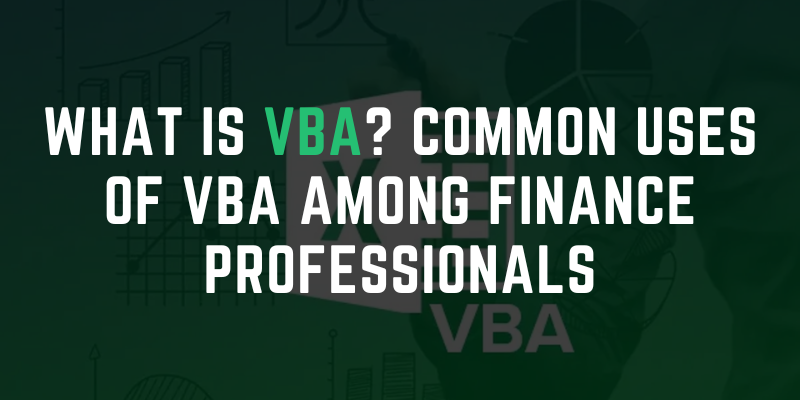 Microsoft created and owns the Visual Basic for Applications programming language. VBA allows you to create macros to automate repetitive word-processing and data-processing functions, as well as generate custom forms, graphs, and reports. VBA works within Microsoft Office applications; it is not a standalone product. Join FITA Academy‘s Excel VBA Training in Chennai to learn more about VBA technology. It provides advanced certification training as well as 100% job placement assistance. Let us now learn more about VBA and Common uses of VBA among finance professionals.
Microsoft created and owns the Visual Basic for Applications programming language. VBA allows you to create macros to automate repetitive word-processing and data-processing functions, as well as generate custom forms, graphs, and reports. VBA works within Microsoft Office applications; it is not a standalone product. Join FITA Academy‘s Excel VBA Training in Chennai to learn more about VBA technology. It provides advanced certification training as well as 100% job placement assistance. Let us now learn more about VBA and Common uses of VBA among finance professionals.
What is VBA?
Visual Basic for Application is abbreviated as VBA. The VBA programming language enables users to access functions that are not available in Microsoft Office applications. Users can also use VBA to customise applications to their specific needs, such as creating user-defined functions, automating computer processes, and gaining access to Windows APIs.
How is VBA used?
VBA is used to perform various functions, and different types of users use the programming language for different purposes. VBA is used by the following organizations:
General users
Most users use MS Office applications such as Excel on a daily basis. The VBA language is included free of charge with the MS Office package. VBA is used to automate tasks and perform a variety of other tasks in addition to creating and organizing spreadsheets.
Computer professionals
VBA assists computer professionals in performing complex tasks such as replicating large lines of code, designing languages within MS Office applications, and combining the functions of two or more programmes.
Enrol in the Learn Advanced Excel Online, Which will help you understand more Concepts about Usage of VBA Applications.
Corporate users
VBA is useful not only for individuals, but also for businesses. VBA programming language can be used by businesses to automate key business procedures and internal processes. Accounting procedures, minute tracking, real-time sales order processing, complex data calculation, and other functions can be implemented using VBA.
VBA can automate the tasks listed above to improve the efficiency of internal business processes. It also enables businesses to consolidate their data in the cloud, making it accessible from anywhere in the world.
Read more: How Can Data Science Techniques Be Applied to Big Data Analytics?
Common uses of VBA among finance professionals
Some of the ways finance professionals use VBA in their work are as follows:
Analyze huge amounts of data
Portfolio managers, financial analysts, traders, and investment bankers are frequently required to deal with large amounts of data. They must go over all of the data and use it to make critical buy or sell decisions. Professionals can use VBA to create macros that allow for faster data analysis.
Create and maintain complex models
VBA can also be used by finance professionals to create trading, pricing, and risk management models. The models can be used to track the performance of stocks in real time on the securities exchange market, forecast the trend of each stock, and provide signals on when to buy or sell as well as the appropriate pricing at each stage.
The VBA programme can also be used to generate financial ratios, which allow analysts to assess the financial performance of publicly traded companies and compare the trends and performance of two or more entities over a specified time period.
Create investment scenarios
Investment bankers and financial analysts frequently need to compare two or more investment scenarios in order to make decisions. In mergers and acquisitions, for example, finance professionals must consider the financial impact of the merger to determine whether it is feasible. Professionals can use VBA to create macros that simulate investment scenarios in order to get a sense of the expected outcomes/effects.
Conclusion
This blog has discussed Common uses of VBA among finance professionals. Join the Excel Training in Bangalore if you want to learn more about Excel VBA Technology. It offers the best certification training with knowledgeable instructors.
Read more: Linux Interview Questions and Answers
